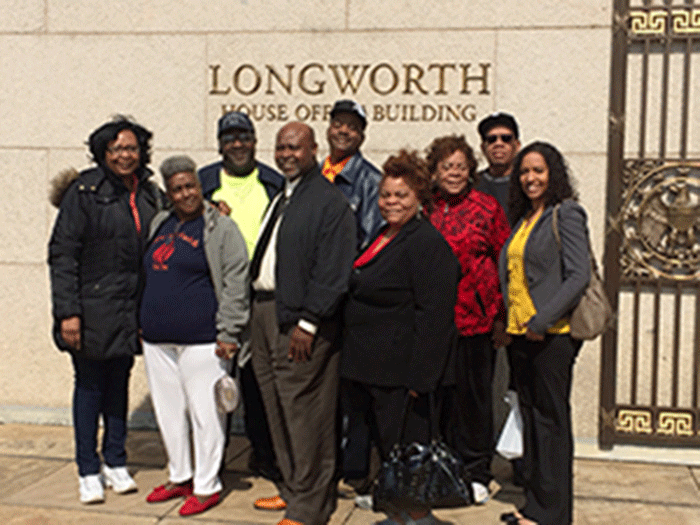
United Congregations of the Metro East (UCM) brought more than 1000 postcards asking the Department of Labor to update 30-year-old affirmative action regulations that could move millions into good paying jobs.
Other organizations, including MOSES from Detroit, MICAH from Milwaukee, Gamaliel of Metro Chicago, and Faith Coalition for the Common Good, brought thousands more. In addition to updating affirmative action policies, these activists want the U.S. Department of Transportation to encourage cities and states to use the new year-long “Local Hire” program on as many highway and transit projects as possible.
These very specific asks are part of a broader vision that movement-oriented campaigns like Occupy, the Dreamers, and the Fight for $15 have pushed the left to adopt. Now, National People's Action is launching a new populism campaign. The Center for Community Change, Center for Popular Democracy, and Gamaliel are launching a jobs campaign this week that has a full employment agenda. The Alliance to Reclaim Our Schools wants to make sure that every child has access to quality education and their campaign slogan is “The Schools Our Children Deserve.”
Why are activists getting more ambitious and framing their work more broadly? It's as if the left has ripped a page from the Tea Party's playbook: Their vision was “shrink it (the government) down to the size where we can drown it in the bathtub.” It's a vision that’s powerful and simple, whether you agree with it or not. The environmental movement has always had a powerful and simple vision because we all know what clean air and water look like. For those of us organizing economically insecure families, a vision of abundance is tougher to communicate. Our vision has often looked punitive (“Let's get the bad guys”) rather than positive.
Victims and boogeymen don't get us far enough anymore: stopping structural racism and long-standing inequity requires an ambitious vision as well as clear framing of issues and great messaging. Corporate accountability, full employment, restorative justice, quality public education, the 99 percent vs. the 1 percent, and other frames are starting to get us to a more inclusive vision. What remains to be seen is if these new progressive campaigns can get adequate resources to thoroughly test out a more broad and positive vision.
(Photo: Gamaliel of Illinois visits Congress, courtesy of Gamaliel)





Comments